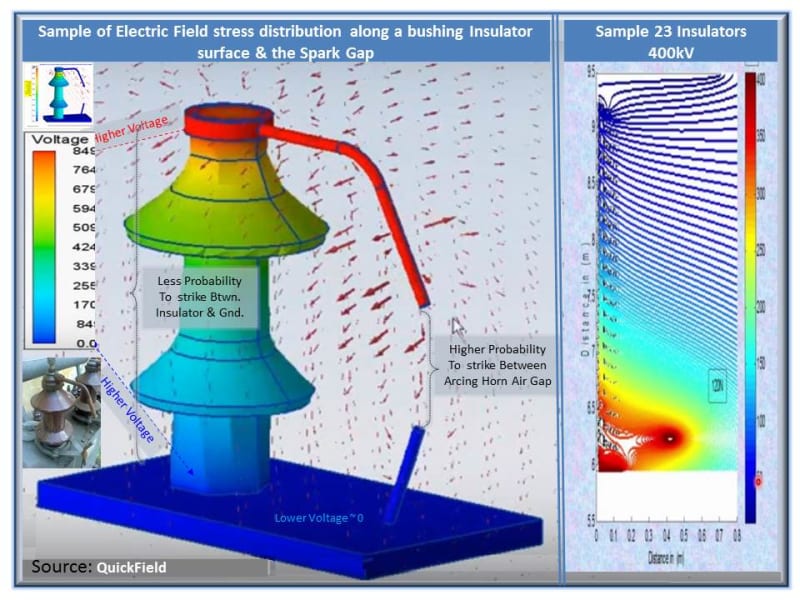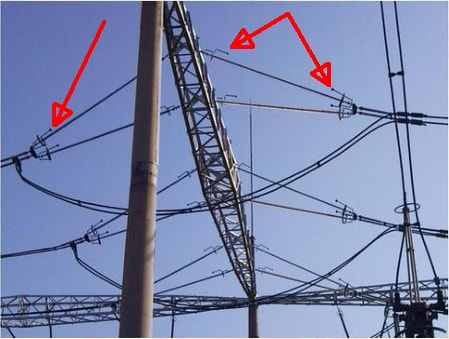Navigation
Install the app
How to install the app on iOS
Follow along with the video below to see how to install our site as a web app on your home screen.
Note: This feature may not be available in some browsers.
More options
Style variation
-
Congratulations cowski on being selected by the Eng-Tips community for having the most helpful posts in the forums last week. Way to Go!
You are using an out of date browser. It may not display this or other websites correctly.
You should upgrade or use an alternative browser.
You should upgrade or use an alternative browser.
Hardware Spikes 2
- Thread starter Mbrooke
- Start date
- Status
- Not open for further replies.
-
1
- #2
davidbeach
Electrical
Spark gap. If the insulator is going to flash over it would be better for it to be in air rather than on the surface of the insulator. Arrestees do a better job since they self extinguish but they’re newer and more expensive.
I’ll see your silver lining and raise you two black clouds. - Protection Operations
I’ll see your silver lining and raise you two black clouds. - Protection Operations
- Thread starter
- #3
davidbeach
Electrical
Don't know. The only installations of those that I've seen were in Europe and I don't know anything about actual performance.
I’ll see your silver lining and raise you two black clouds. - Protection Operations
I’ll see your silver lining and raise you two black clouds. - Protection Operations
- Thread starter
- #5
Its alright. Europe has a unique yet respectable way of doing things. I know that every time I like at EU drawings (or pics) I end up learning something new about electrical theory.
Have your toured any EU substations from the inside? I remember you mentioning the grass inside them.
Have your toured any EU substations from the inside? I remember you mentioning the grass inside them.
- Moderator
- #6
Those are on the grounded end of the insulators.
The insulators appear to be anchored by cables.
In the event of a lightning strike, the twist in the cables can introduce quite a bit of inductive reactance.
Could a flash-over between those spikes provide an alternate current path in the event of an extremely fast rising wave front?
Bill
--------------------
"Why not the best?"
Jimmy Carter
The insulators appear to be anchored by cables.
In the event of a lightning strike, the twist in the cables can introduce quite a bit of inductive reactance.
Could a flash-over between those spikes provide an alternate current path in the event of an extremely fast rising wave front?
Bill
--------------------
"Why not the best?"
Jimmy Carter
-
1
- #8
The hardware shown in the picture is a combination of an arching horn and grading ring.
- Arching horn is intended to discharge in a flashover condition instead of arching over the insulator.
-Grading ring is used to mitigate corona and make more uniform the voltage gradient between the insulator avoiding overstress in those insulators in close contact with the live conductor.
NOTE: Grading ring is common to use in porcelain insulator assembly 230 kV and above and more often used in polymer unit. Arching horn on the other hand is not universally used and uncommon in the ANSI marketplace. Some of the rationales are associated with unreliable performance, sensitivity to changes in weather conditions, radio interference, and noise generation above the accepted threshold.
For Additional reference see:


- Arching horn is intended to discharge in a flashover condition instead of arching over the insulator.
-Grading ring is used to mitigate corona and make more uniform the voltage gradient between the insulator avoiding overstress in those insulators in close contact with the live conductor.
NOTE: Grading ring is common to use in porcelain insulator assembly 230 kV and above and more often used in polymer unit. Arching horn on the other hand is not universally used and uncommon in the ANSI marketplace. Some of the rationales are associated with unreliable performance, sensitivity to changes in weather conditions, radio interference, and noise generation above the accepted threshold.
For Additional reference see:


- Thread starter
- #9
cuky2000 wrote:
This may be picky, but spelling and pronouncing are two different things, dive us crazy though this fact might...
The only time "arch" is pronounced ARK is in words like archangel [ note: not as in arch-enemy ].
These are therefore arcing horns.
BTW, Mbrooke: spikes ARE hardware! [groan]
Just couldn't resist...
arching
This may be picky, but spelling and pronouncing are two different things, dive us crazy though this fact might...
The only time "arch" is pronounced ARK is in words like archangel [ note: not as in arch-enemy ].
These are therefore arcing horns.
BTW, Mbrooke: spikes ARE hardware! [groan]
Just couldn't resist...
MOV surge arrester is common to use in both the ANSI and IEC marketplaces. Most power and distribution transformers are equipped with MOSA surge arresters and common use in the substation line entrance. Transmission line surge arresters are commercially available but they are slowly penetrating the power market.

cuky; I'd suggest you make the color-key blocks about 4X bigger as it's very hard to discriminate between the close colors with blocks that small.
Keith Cress
kcress -
Keith Cress
kcress -
- Status
- Not open for further replies.
Similar threads
- Locked
- Question
- Replies
- 11
- Views
- 540
- Locked
- Question
- Replies
- 13
- Views
- 529
- Locked
- Question
- Replies
- 2
- Views
- 355
- Locked
- Question
- Replies
- 3
- Views
- 190
- Replies
- 0
- Views
- 92

